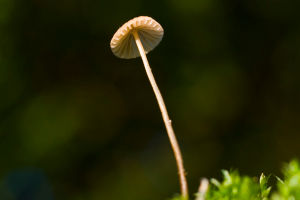Have you ever touched a plant and watched it move? It feels like magic—but it's actually biology in action!
Today, we're going to explore the fascinating world of plants that move.
Together, we'll learn about how and why certain plants like the Venus flytrap and mimosa plant shift their leaves and structures in response to their environment. Get ready—you may never look at plants the same way again!
How Do Plants Move?
Most plants appear completely still. They grow slowly over days and weeks, not minutes or seconds. But a special group of plants can perform rapid movements that we can see with the unaided eye.
This ability is called nastic movement. It allows parts of a plant to change position in response to touch, light, or other stimuli. Instead of using muscles, plants rely on changes in water pressure within their cells to create motion.
Let's take a closer look at two of the most famous moving plants: the Venus flytrap and the mimosa plant.
The Venus Flytrap: A Snap Like No Other
The Venus flytrap (Dionaea muscipula) is one of nature's most famous moving plants. It's also a carnivorous plant that captures and digests insects.
How does it work? The inner surface of the flytrap's leaves contains sensitive trigger hairs. When an insect touches these hairs twice in quick succession, the trap snaps shut in about one-tenth of a second!
Once the trap closes, the plant begins to secrete digestive enzymes, breaking down its prey into nutrients. After digestion, the trap reopens, ready to catch the next visitor.
According to Dr. Rainer Hedrich, a plant physiologist at the University of Würzburg, "The Venus flytrap is one of the fastest-moving plants on Earth and an excellent example of how plants use physics and chemistry to achieve remarkable movements."
The Sensitive Plant: Mimosa Pudica
Another well-known moving plant is the sensitive plant, or Mimosa pudica. If you gently touch its leaves, they will fold inward and droop within seconds.
Why does this happen? Scientists believe this movement is a defense mechanism. By folding its leaves, the plant may scare away herbivores or protect itself from environmental stress like strong winds or rain.
The movement is caused by a rapid change in water pressure in specialized cells called pulvini at the base of each leaflet. As water leaves these cells, the leaf collapses, giving the appearance of motion.
Other Moving Plants
While the Venus flytrap and Mimosa pudica are the stars of the show, many other plants also move in subtle or surprising ways:
• Sundews (Drosera): These carnivorous plants use sticky tentacles that slowly curl around trapped insects.
• Dancing plant (Desmodium gyrans): Its small leaflets can visibly move in response to sound or temperature changes.
• Morning glories (Ipomoea): Their flowers open and close daily, tracking the sun.
Even climbing plants like beans or peas exhibit a kind of movement called circumnutation, where growing shoots slowly circle to find support.
Why Movement Matters
You might wonder—why do plants need to move at all?
Experts like Dr. Simon Gilroy, a plant biologist at the University of Wisconsin-Madison, point out that "plant movement is an essential survival tool." It allows plants to:
• Capture food (in carnivorous species)
• Avoid or deter herbivores
• Adjust to changes in light or temperature
• Seek physical support as they grow
By studying these mechanisms, scientists are learning valuable lessons about biomechanics and even exploring applications in robotics and materials science.
Can You Grow Moving Plants?
The good news is—yes! Many of these fascinating plants can be grown at home:
• Venus flytraps do well in bright light and humid conditions.
• Mimosa pudica is often grown as a fun houseplant that reacts to touch.
• Sundews can be cultivated in terrariums with the right moisture and soil.
Growing moving plants can be a wonderful way to spark curiosity and deepen our appreciation for nature's hidden talents.
Let's Keep Exploring!
Isn't it amazing that some plants move faster than we'd ever expect? These remarkable behaviors remind us that the plant world is full of surprises.
Next time you visit a garden or plant shop, look out for moving plants—you might even decide to bring one home! And if you already have experience growing them, we'd love to hear your tips and stories. Let's keep discovering the magic of nature together! 🌿✨🌸


